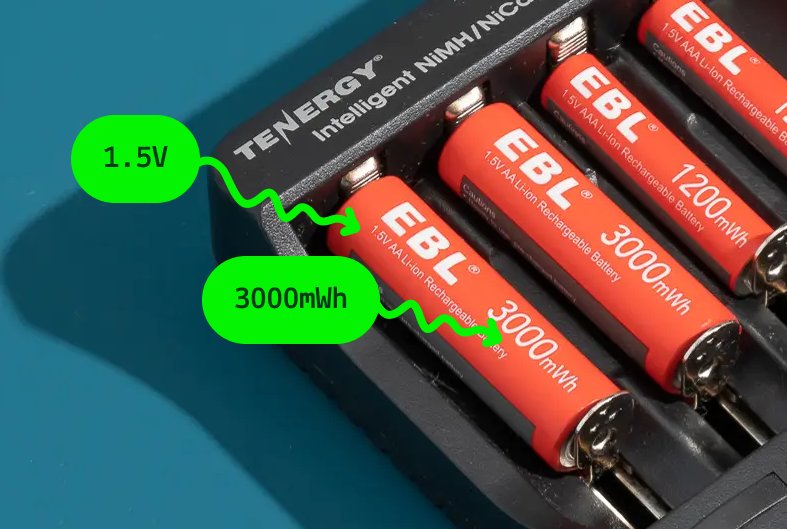Comfy Academy
Like humans, robots need energy to function. In this lesson, we'll explore the basics of powering robots with options like power supplies and batteries. By the end, you'll confidently choose a power source for your project.

If you flip over a battery, you will find specifications such as voltage & power like below....

What do these mean?
V stands for Volt, the unit of Voltage. Common power sources, such as batteries and power supplies, typically provide 3-12V.
Make sure your robots components have the same voltage as the power supply
For reference, DC motors often use 3V, smartphones typically operate on 5V, and desktop monitors usually require 12V.
Often in a robot, you will have components with different voltage requirements. Refer to Buck Converter below for this case.

mWh stands for milli-Watt-hour, the unit for Energy. This shows how much energy there is in a fully charged battery.
You might know of the unit mAh (milli-amp-hour). To find mWh, use the formula below.
mAh * V = mWh
The oldest, most reliable, powerful & affordable option for any robotics project.
Compared to batteries, this provives virtually unlimited power from the mighty wall outlet.

Best option if portability is not a requirements
Batteries can be complex and, if mishandled, dangerous. This guide aims to simplify battery selection for various use cases, making the process easier and more enjoyable for robot builders. It is regularly updated with new information. For discussions or questions, join our Discord channel below!

Join us to discuss about robotics or provide feedback!